Ragi mudde is also known as ragi sankati, finger millet balls is a popular traditional recipe from Andhra. It is made with finger millet flour or ragi flour, salt and oil which is cooked and shaped into ball. This recipe for ragi mudde is not lumpy, sticky and it is soft in texture without being dense. Typically ragi mudde is served with vatha kuzhambu or kara kuzhambu but you can enjoy with chicken kuzhambu or mutton curry. Learn how to make healthy ragi mudde with step by step pictures and video.
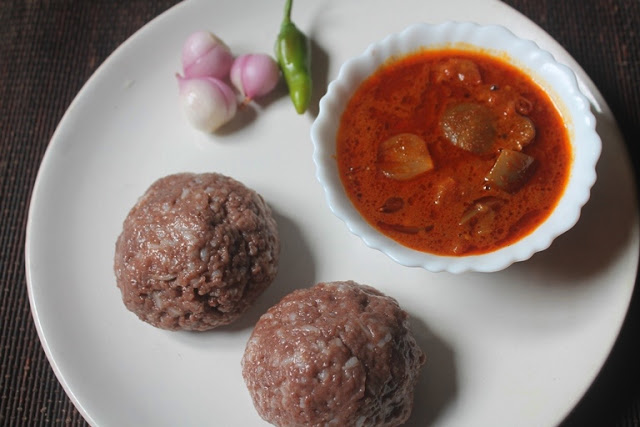
Ragi Mudde
This recipe is very new to me. But it is a very popular dish in Andhra / Karnataka. Ragi flour / finger millet flour is cooked in water to shape it into a ball. This can be served with any spicy curries or dal or even with non veg curries. There are two ways of making this ragi mudde, one with rice and one without rice.
Jump to:
Ragi mudde is a filling and healthy recipe that you can make with ragi flour. It is traditionally made in earthenware cookware and served into ball shaped portions. Check other ragi recipes and millets recipes.
What is Ragi Mudde?
Ragi mudde is a traditional Andhra recipe made with finger millet flour. It is naturally gluten free since it uses ragi flour for making the balls. This recipe is highly nutritious and wholesome dish which has many nutrients in them including iron, calcium and vitamins. As an added bonus, this is gluten free.
About Ragi Mudde
Ragi mudde is also known as ragi sankati, ragi balls, finger millet balls or ragi kali. It is a traditional dish made with ragi flour. Ragi flour is cooked in water and shaped into balls. It is said that ragi mudde provides energy while keeping full. So it is best to consume it for breakfast or lunch. Having ragi mudde for dinner may cause digestion issues.
Ragi mudde is made often in rural part of karnataka. This is a healthy and filling meal and keeps the farmers full for a long time. My granny makes it when we were little. She never uses rice. If you are making this for diabetic people, skip the rice.
One important trick to make perfect ragi mudde is Ragi flour is dumped into boiling hot water and steam cooked for few minutes before mixing it in. This trick ensures that your ragi Mudde doesn’t get gloppy or gummy. It requires lots of stirring, Traditionally a wooden stick is used to mix ragi flour into the water. it is called as Mudde Kolu. You can use any strong ladle for mixing, even rolling pin can be used.
Ragi is rich in iron and it is good for weight loss and helps to bring sugar level under control. So include it in your diet often. You can simply serve this with buttermilk, peeled shallots & green chillies as well.
Ragi mudde doesn’t have much taste on its own. It had to be served with spicy side dishes. We enjoy it with non veg curries, thick masala like dishes like mutton masala, chicken masala or Nattu kozhi Kuzhambu.
Watch Ragi Mudde Video

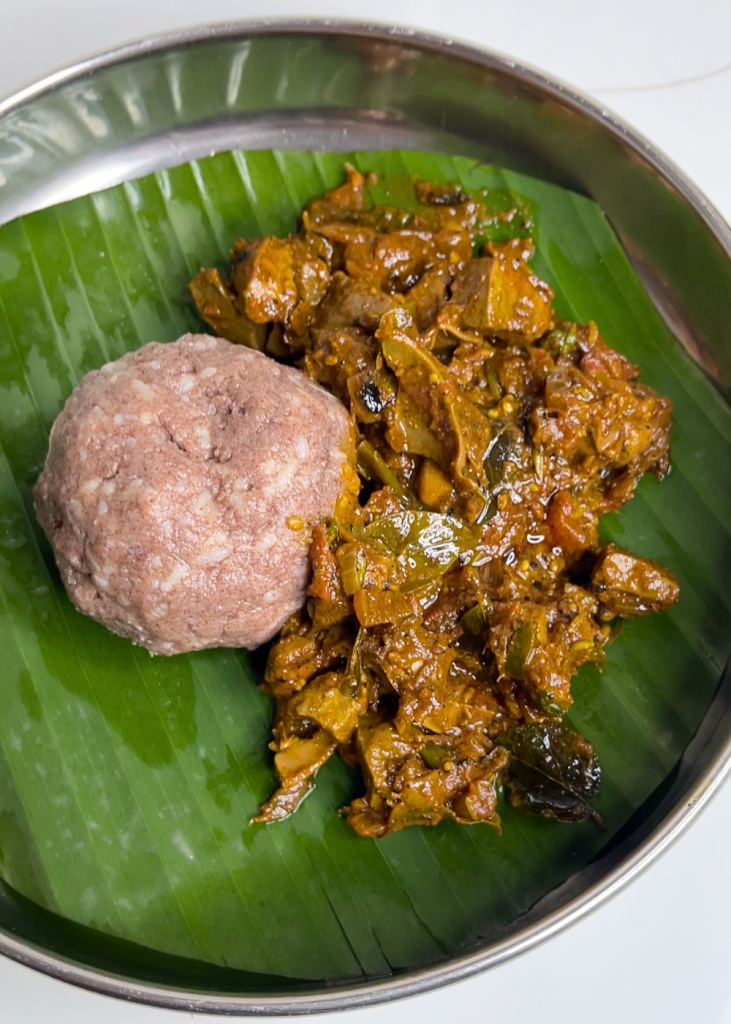
Ragi mudde vs Ragi Sankati
Ragi Mudde is originated in Karnataka and it is made with only ragi flour and water. While ragi sankati is popular in Andhra Pradesh which has cooked rice added in the Mudde.
Personally I prefer ragi mudde with rice. Even though it is optional, adding cooked rice in ragi mudde helps with the texture and make it filling and nutritious. You can use cooked red rice or any cooked millets of choice instead of rice. When using rice in ragi mudde, it is called as sankati.
More ragi recipes for you to try
Ragi cookies
Ragi Mudde ingredients
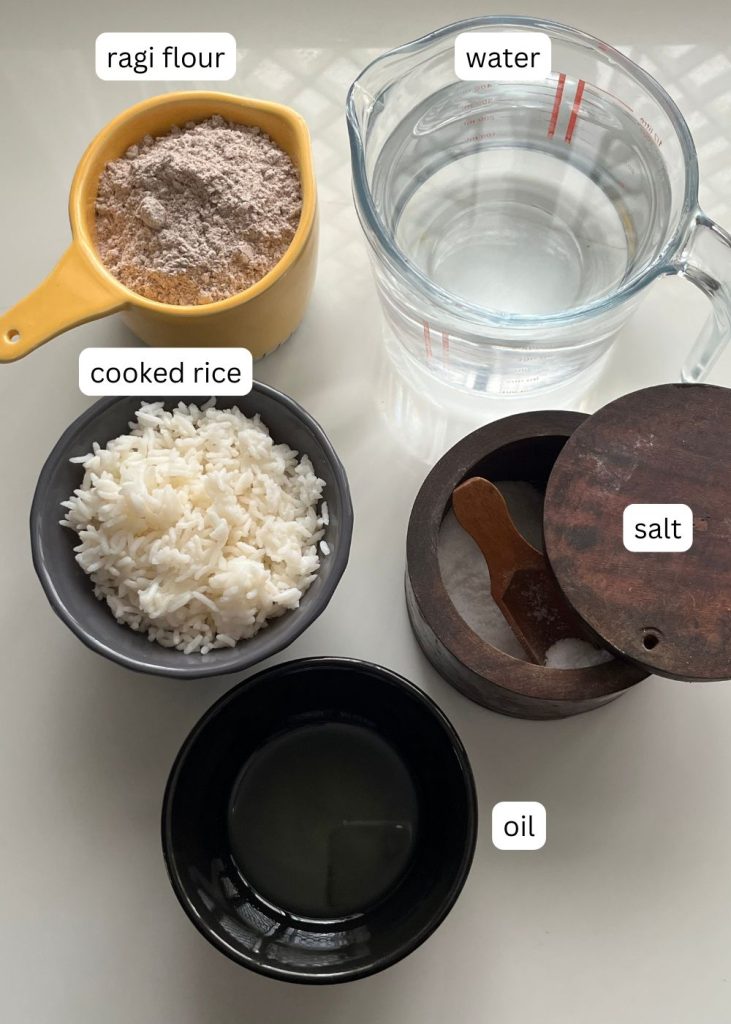
Ragi flour - use fine quality finger millet flour. You can use roasted or unroasted ragi flour as per your preference. Sprouted or unsprouted ragi flour can be used.
Cooked rice - this is optional, adding cooked rice in ragi mudde helps with the texture and make it filling and nutritious. You can use cooked red rice or any cooked millets of choice instead of rice. When using rice in ragi mudde, it is called as sankati.
Salt - season the water with salt so it incorporates evenly in the cooked ragi.
Water - for every 1 cup of ragi flour, I use 2 cups of water. This is the ratio which works for me every time.
Oil - you can use gingelly oil which is also known as Indian sesame oil. Coconut oil or ghee can be used.
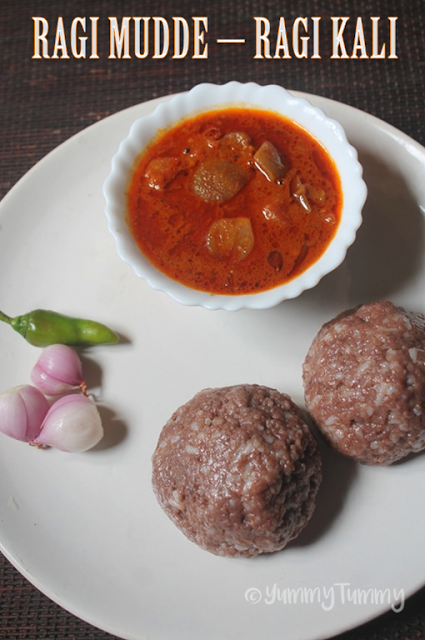
Pro tips for perfect ragi mudde
Pots to choose - Use deep pot for making ragi mudde. I prefer to use earthenware pot or clay pot which retains heat. Using deep pot helps the mixing process easier too.
Important to not mix - allow the water to come to a full boil before dumping in the ragi flour in one go. Once u add the ragi flour into the boiling water, don’t mix the flour immediately. Instead cover the pot with lid and cook for 5 to 6 minutes and then mix the ragi into the water using a wooden ladle. This is one of the most important step in making ragi mudde. It helps with the non sticky texture and smooth lump free mixture.
Non sticky ragi mudde tips- Ragi flour is dumped into boiling hot water and steam cooked for few minutes before mixing it in. This trick ensures that your ragi Mudde doesn’t get gloppy or gummy.
Using strong ladle for mixing - once ragi is cooked, mix it really well using a wooden ladle till there is no raw ragi flour visible. It has to be combined with the water and gets non-sticky. Traditionally a wooden stick is used to mix ragi flour into the water.
Let it rest - once ragi is mixed into the water. Cover and let it rest for at least 30 minutes before shaping into ball like texture.
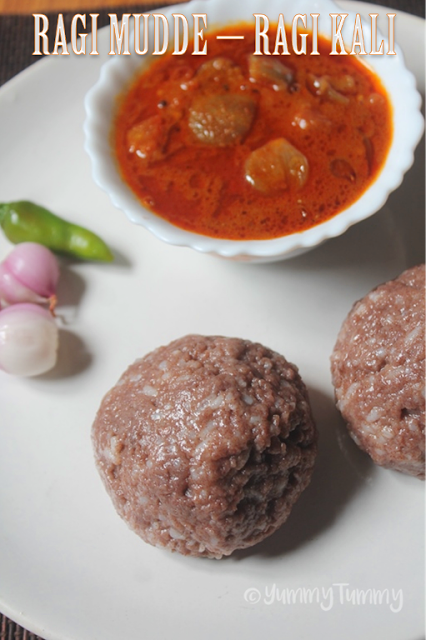
How to Make Ragi Mudde (Stepwise Pictures)
Boiling Water
1)Take a deep pot. I like to use my stoneware which is deep enough for mixing. You can use pressure cooker or any heavy bottom sauce pot.
Take 2 cups of water in the pot. I am using 1 cup of ragi flour. For every one cup of ragi flour you need 2 cups of water.
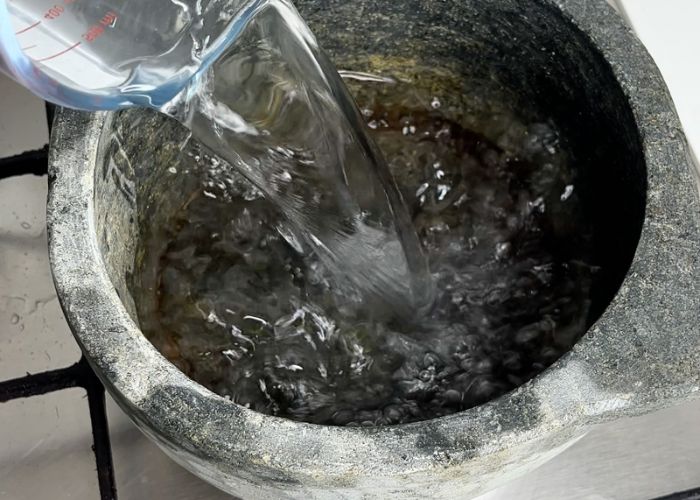
2)Add salt into the water. Ragi mudde doesn't need much salt, since we will be serving this some kind of spicy curries.
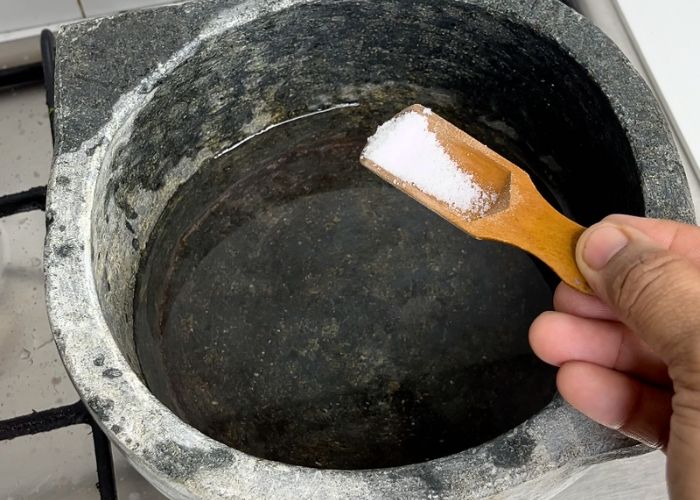
3)Add in ghee or oil.
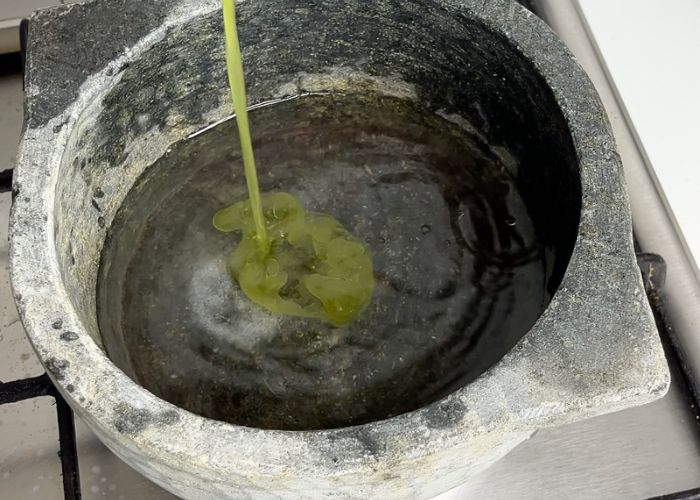
4)Add in cooked rice. Now this is optional, adding cooked rice in ragi mudde helps with the texture and make it filling and nutritious. You can use cooked red rice or any cooked millets of choice instead of rice.
When using rice in ragi mudde, it is called as sankati.
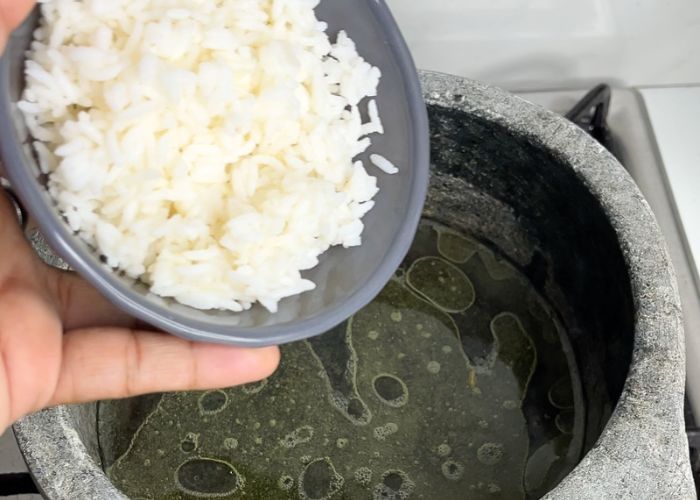
5)Mix it well and bring it to a full boil.
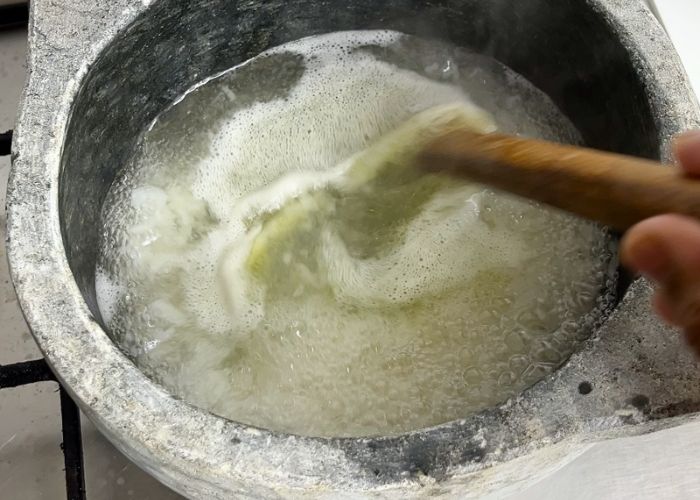
Adding Ragi Flour
6)Now add in 1 cup of ragi flour. No need to sprinkle, just dump the whole cup of ragi flour straight into the boiling water.
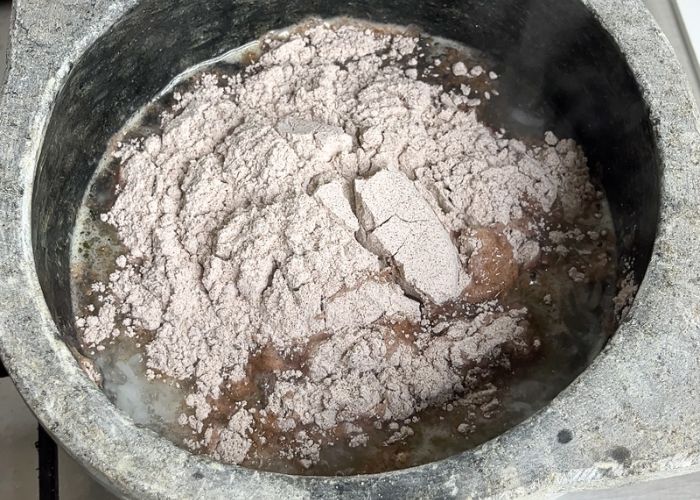
7)Once the ragi flour is added in. Immediately cover the pot with lid and let it cook on medium heat for 6 to 7 minutes. The steam from the water will cook the ragi flour.
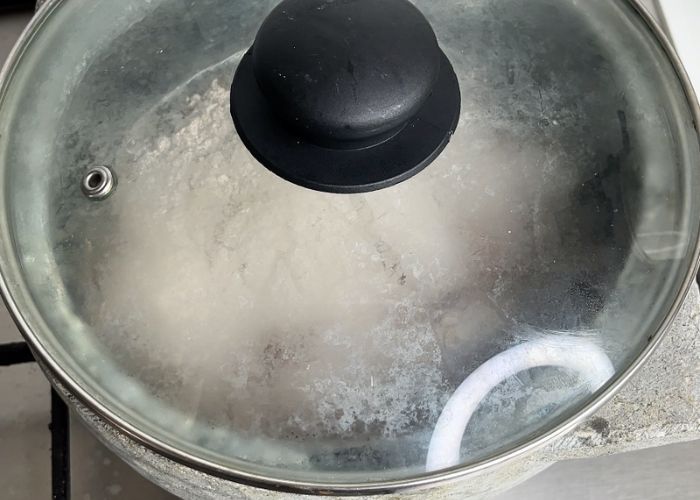
8)After 7 minutes this is how the mixture will look like. Most of the ragi flour would be sunk into the water and some raw flour would be seen on top.
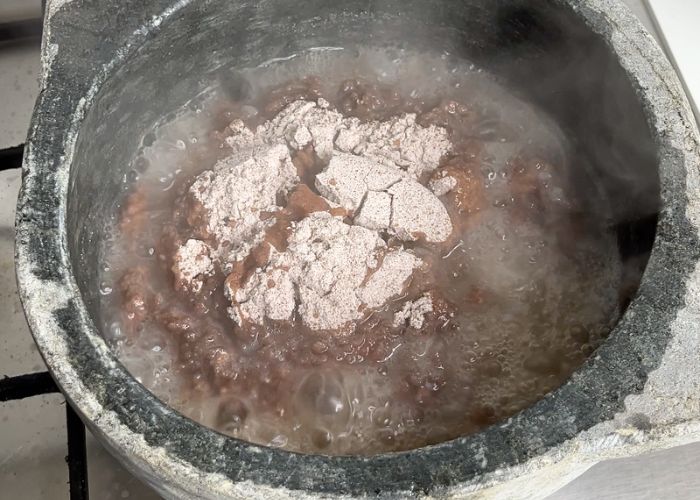
Mixing Mudde
9)Now use a strong wooden ladle. Traditionally a wooden stick called as mudde kolu would be used to mix ragi flour into the water. you can use a rolling pin too.
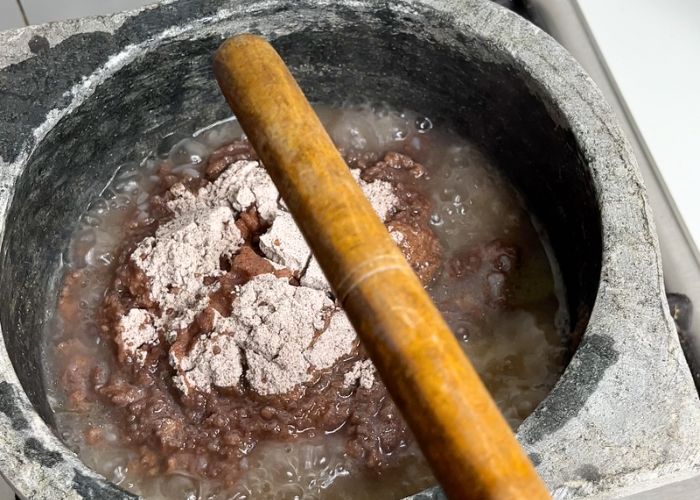
10)Lower the heat and keep mixing it constantly until there is no visible raw flour remaining on top.
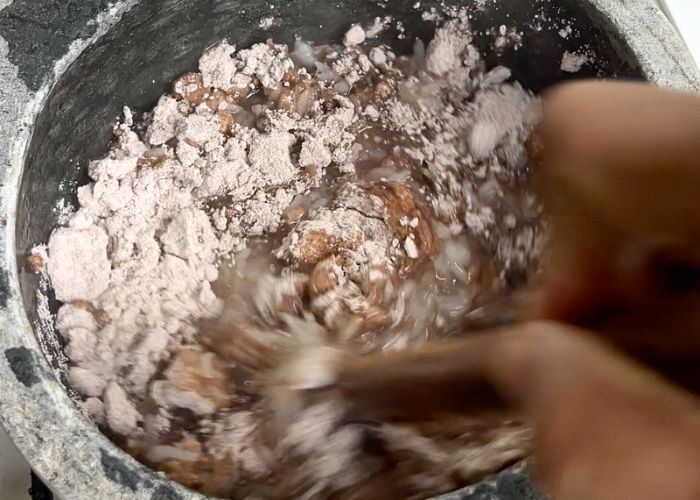
11)Now you can see the mudde mixture is mixed completely. The mixture must have thickened quite a bit.
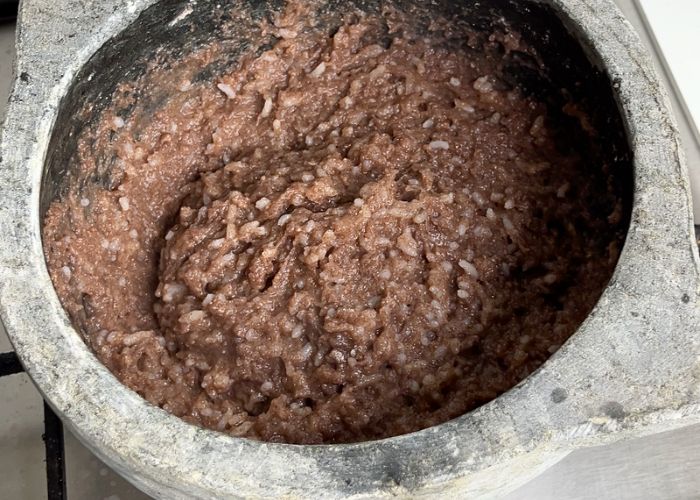
12)Now cover the pot with a lid and let it cook on low heat for 3 minutes. This is to steam to ragi mudde.
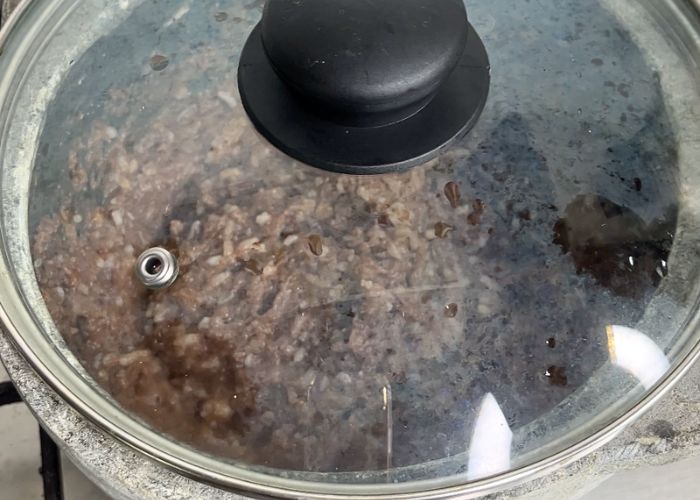
13)Now the ragi mudde mix is ready.use a spatula to mix it once. It should be smooth and non sticky.
Now take it off the heat and keep it covered so it cools for 30 minutes or so.
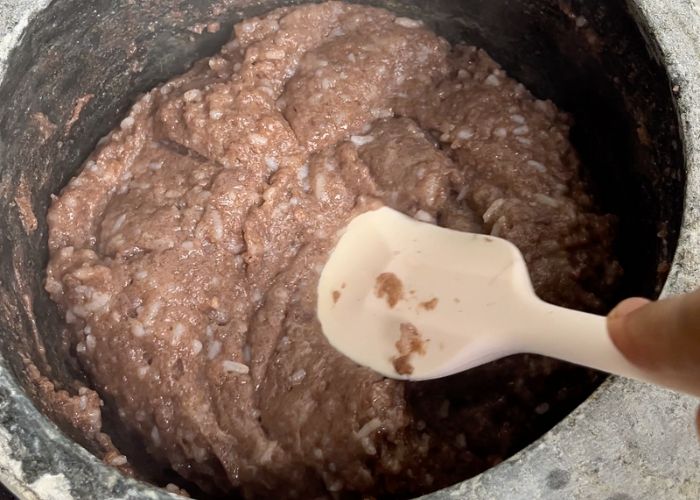
Shaping Mudde
14)Grease your hands with oil or water. Take a small portion of the ragi mixture. Shape it into portion size ball.
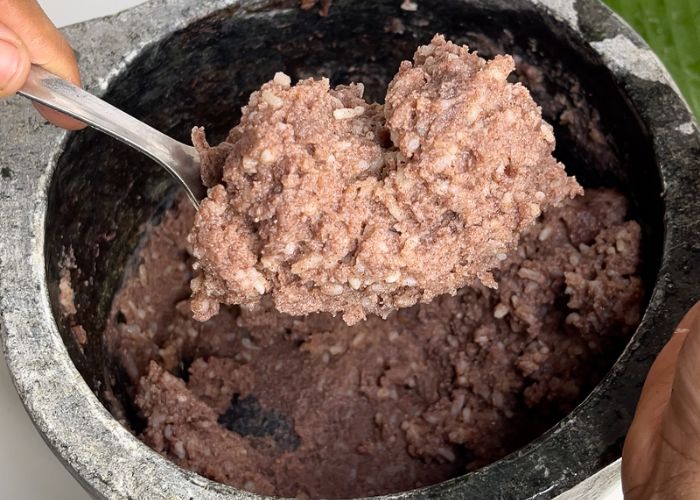
15)Shape it into a round ball. Store this in a hot casserole to keep warm. Repeat with the remaining mixture.

16)Ragi mudde or Ragi sankati is ready.
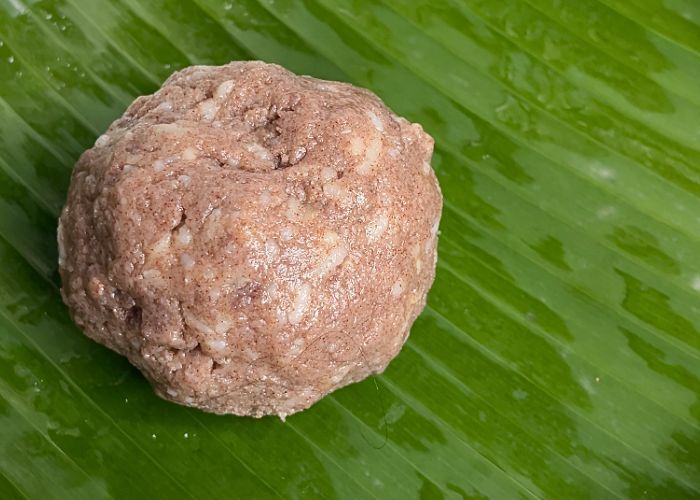
Expert Tips
- For every one part of ragi flour you have to use 2 parts water.
- Adding rice is optional, you can avoid that if you want to.
- Instead of cooked white rice, you can use cooked millets or cooked red rice. Cooked saamai, quinoa, varagu can be used.
- You can shape ragi mudde which ever size you prefer.
- Ragi Mudde can be served with veg curries or non veg curries.
Serving and Storage
Ragi Mudde taste best when served fresh and hot. For storing leftovers, keep it in fridge and reheat in microwave for few seconds before serving. You can steam it again in a idli steamer before serving. It can be served with veg and non veg curries. Some ideas for you.
Vathakuzhambu
Brinjal Pulusu
Ulli Theeyal
Spinach Pulikari
Puli kuzhambu
Vendaikkai Kuzhambu
Karamani Kuzhambu
More Ragi Recipes to try
📖 Recipe Card
Ragi Mudde Recipe | Ragi Sankati (Ragi Balls)
Equipment
- Heavy bottom pot
- Wooden Ladle
Ingredients
- 2 cups Water
- 1 cup Ragi Flour
- ¼ cup Cooked Rice optiona
- 1 tsp Salt to taste
- 1 tsp Gingelly Oil or Ghee
Instructions
- Heat water in a heavy bottom pan. Add salt, oil, cooked rice and mix well. Bring it to a full boil.
- Once the water is rolling boil. Add all the ragi flour into the water and don't stir it, just cover the pan with a lid and cook on medium heat for 6 to 8 minutes.
- Once the ragi flour is steam cooked. Open the lid and use a wooden ladle to mix it really well till ragi flour is combined with the water. Once the mix has thickened, Now cover the pot with lid and let it cook on low heat for 2 to 3 minutes.
- Now open the lid and give one final mix. Take it off the heat and cover it with a lid. Set aside for 30 minutes to cool. Once it is cooled, take small portion and shape this into ball and serve with any spicy curries.
Video

Notes
-
- For every one part of ragi flour you have to use 2 parts water.
- Adding rice is optional, you can avoid that if you want to.
- Instead of cooked white rice, you can use cooked millets or cooked red rice. Cooked saamai, quinoa, varagu can be used.
- You can shape ragi mudde which ever size you prefer.
- Ragi Mudde can be served with veg curries or non veg curries.
Serving and Storage
Ragi Mudde taste best when served fresh and hot. For storing leftovers, keep it in fridge and reheat in microwave for few seconds before serving. You can steam it again in a idli steamer before serving. It can be served with veg and non veg curries. Some ideas for you. Vathakuzhambu Brinjal Pulusu Ulli Theeyal Spinach Pulikari Puli kuzhambu Vendaikkai Kuzhambu Karamani KuzhambuNutrition
If you have any questions not covered in this post and if you need help, leave me a comment or mail me @[email protected] and I’ll help as soon as I can.
Follow me on Instagram, Facebook,Pinterest ,Youtube for more Yummy Tummy inspiration.
IF YOU MAKE THIS RECIPE OR ANYTHING FROM YUMMY TUMMY, MAKE SURE TO POST IT AND TAG ME SO I CAN SEE ALL OF YOUR CREATIONS!! #YUMMYTUMMYAARTHI AND @YUMMYTUMMYAARTHI ON INSTAGRAM!


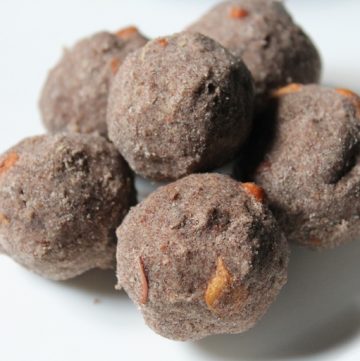

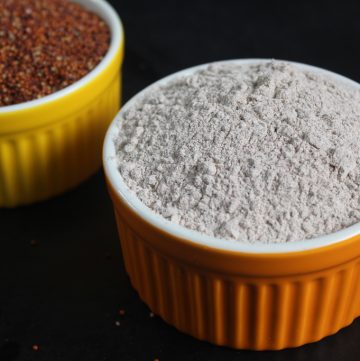
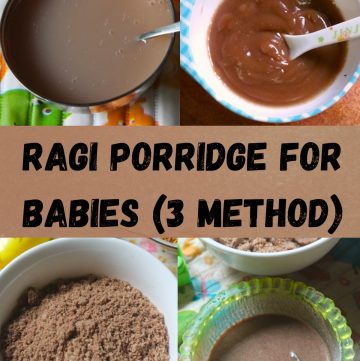
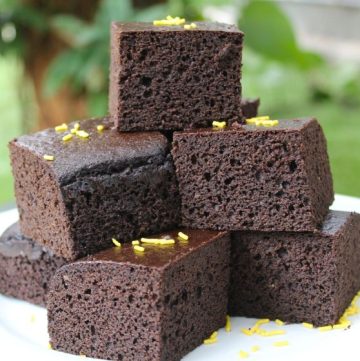
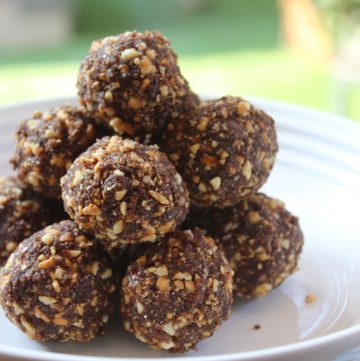
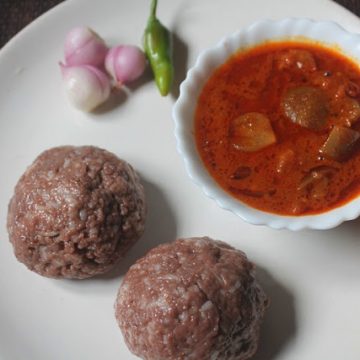
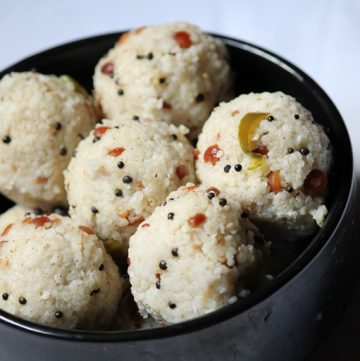
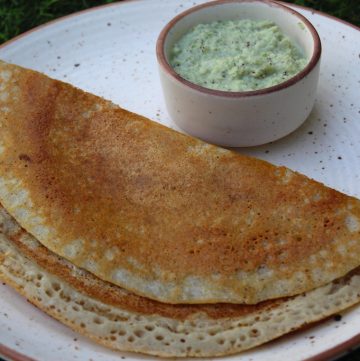
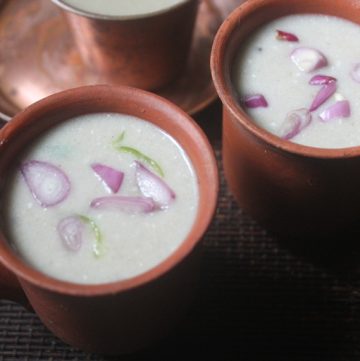
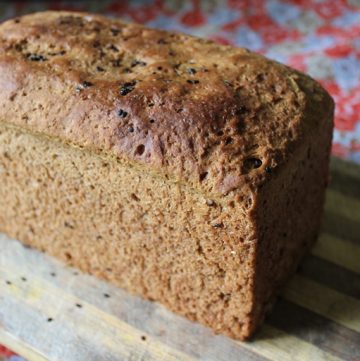
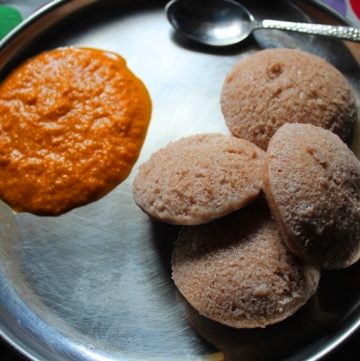
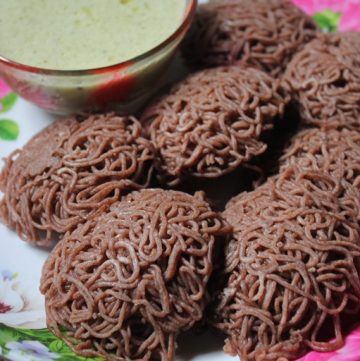
Rohit
Thanks for sharing perfect ragi mudde recipe.
Vijayasree
Thanks a bunch for sharing the healthylicious raagimudde recipe in simple comprehensible steps..I'd like to try without rice once..quite interesting raagi saga..
Ani Paul
Was waiting to learn this health food,thanks a lot
Radha
There is an error above the Chana Kuzhambu goes to the vathal kuzhambu recipe. Which channa is it the red one? Not white one?
Radha
Kindly reply to my email rather than posting this.
Which dals are suitable for ragi?
dark red konda kadalai and karamani?
tuvaram? any others like mochai, moong (with red or green skin)? please mention this for any millet recipe so there are protein options for vegetarians...